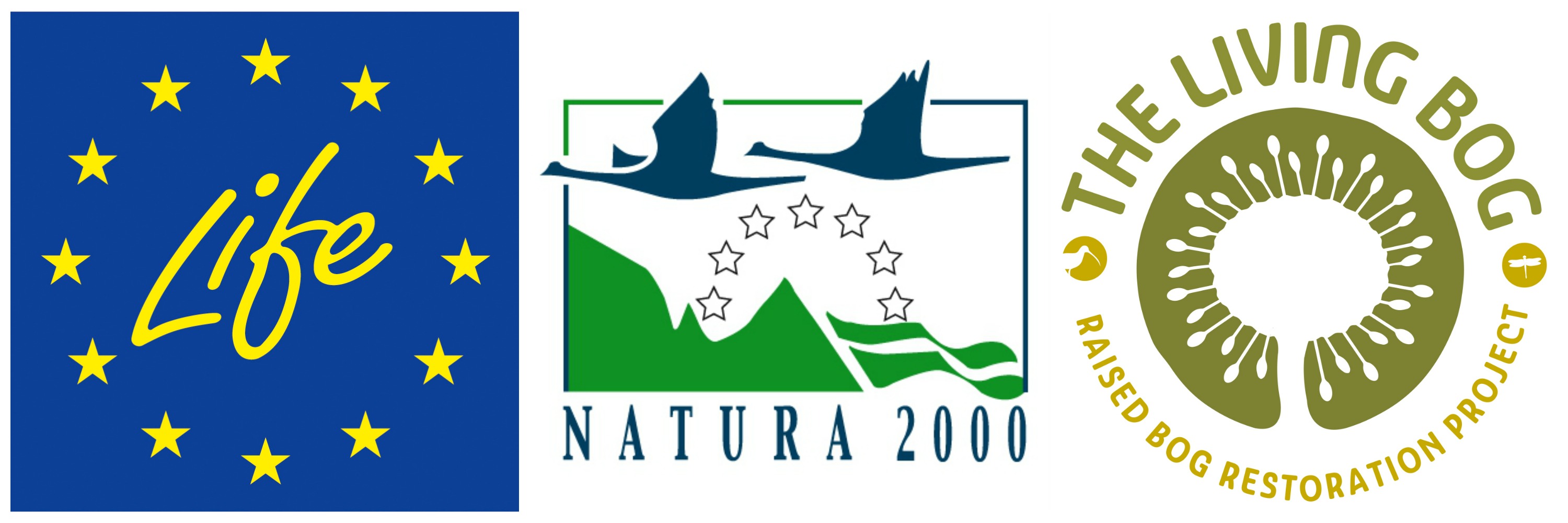Life Project On Killyconny Bog
‘The Living Bog’ LIFE project team will be carrying out a range of habitat restoration techniques. These will include installing new peat and plastic dams to block drainage channels which have been causing the bog to lose water. Disturbed peatland surfaces will be improved to enhance the capacity of both lobes of the bog to restore through greater hydrological connectivity, improving its ecological condition and coherence. By re-wetting the disturbed and ditched habitats, a higher water table will be created, benefitting a trange of rare bog species and in time, a more sustainable natural raised bog habitat will be restored to Killyconny Bog.
The site is a Special Area of Conservation (SAC) selected for the following habitats and/or species listed on Annex I / II of the E.U. Habitats Directive (* = priority; numbers in brackets are Natura 2000 codes):
[7110] Raised Bog (Active)*
[7120] Degraded Raised Bog
Active Raised Bog (ARB) comprises areas of high bog that are wet and actively peat-forming, where the percentage cover of bog mosses (Sphagnum spp.) is high, and where some or all of the following features occur: hummocks, pools, wet flats, Sphagnum lawns, flushes and soaks.
The area of ARB at Killyconny Bog in 1994 was estimated to have been 17.0ha. However, the most recent monitoring surveys of the bog estimated the area of ARB to be 3.9ha (Fernandez et al. 2014a, b). This represents a decline of 13.8ha (81.2%) during the period 1994 – 2012. An additional survey undertaken in 2005 shows that most of this decline occurred during the period 1994-2005.
Degraded raised bog corresponds to those areas of high bog whose hydrology has been adversely affected by peat cutting, drainage and other land use activities, but which are capable of regeneration to active raised bog.
Killyconny Bog is of considerable conservation value, and has form in the restoration stakes.
Restoration works by NPWS took place at the site between 2006-10 including the blocking of some high bog drains and drains on the western and parts of the northern cutover, the grading of face banks, the installation of a length of bund on the high bog and the installation of a bund / seal on the cutover.
The latter bund/dam was installed along the western cutover boundary with adjacent agricultural land parallel to the bog road; this aims to prevent impacts on adjacent agricultural land, encourage re-wetting of larger cutover areas by locally raising water table levels and slow the rate of water loss from the bog.
Coillte also removed the 11.00ha mature conifer plantation (mainly lodgepole pine ) on the southwest cutover of the southern lobe and drains were blocked as part of a previous LIFE Nature project (LIFE04 NAT/IE/000121).
The exact details of our restoration works will be revealed soon, but at present we are looking at installing and maintaining over 1,000 dams, mainly peat with some plastic dams where machinery cannot reach. Several thousand metres of drains will be blocked on both the high bog and the cutover.
A long period of time (i.e. over 30 years) may be needed after appropriate restoration works are undertaken on the cutover areas for the habitat to develop. Restoration works along the western cutover of Killyconny Bog SAC indicated the occurrence of pioneer ‘active raised bog’ vegetation 8 years after these were undertaken.
Information signs and additional public access is being looked at, particularly as the bog has such a high amenity value. Details will be here in time.

